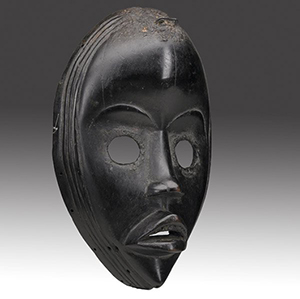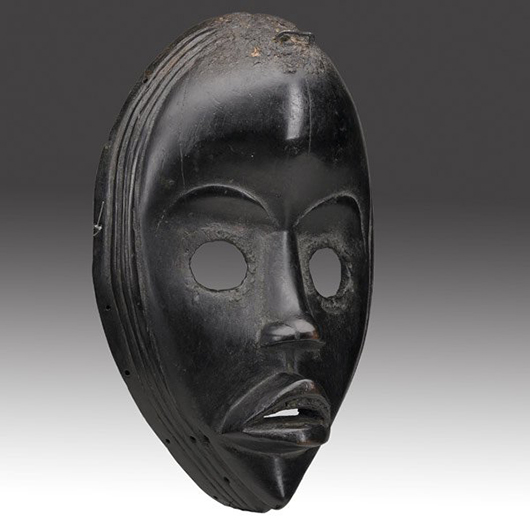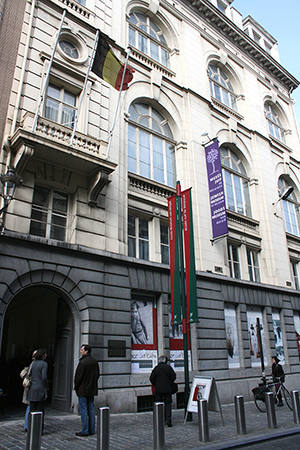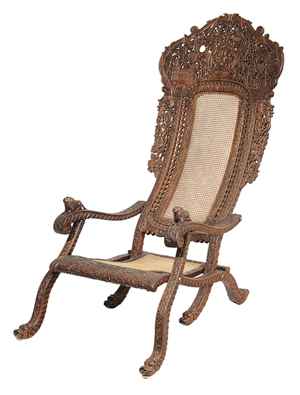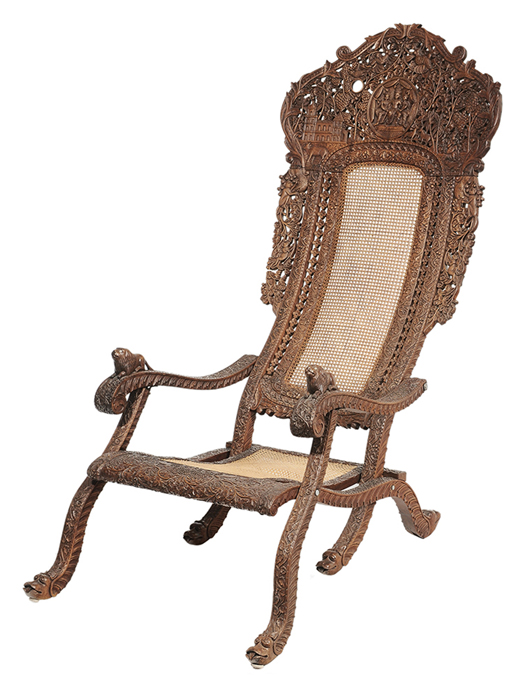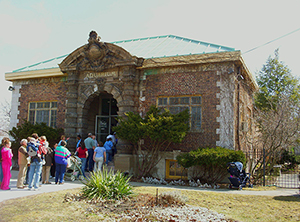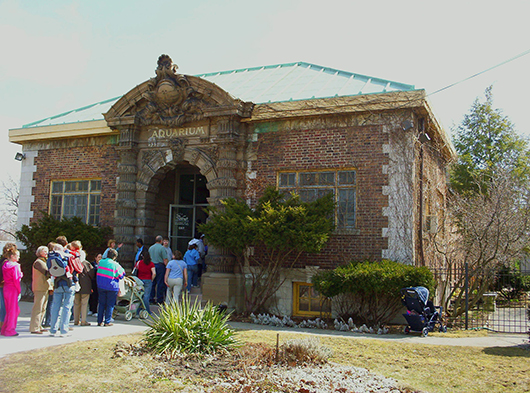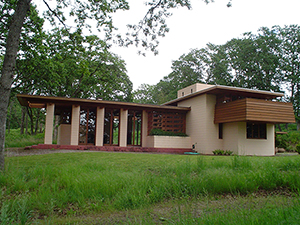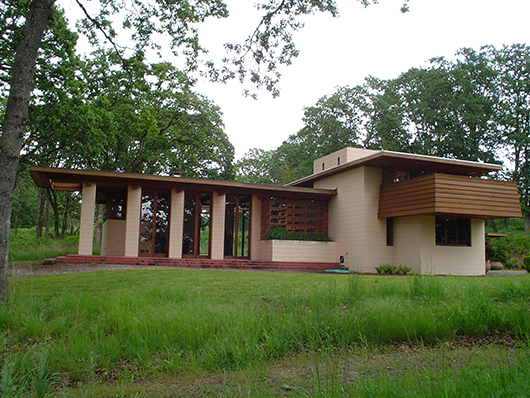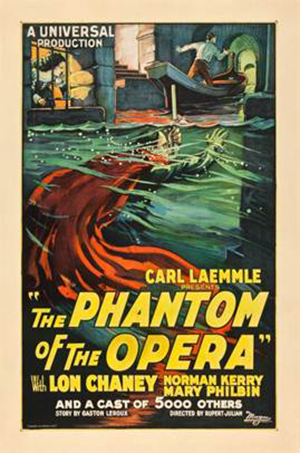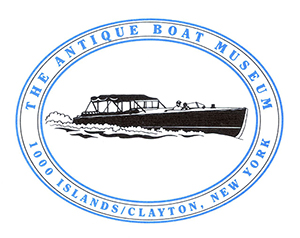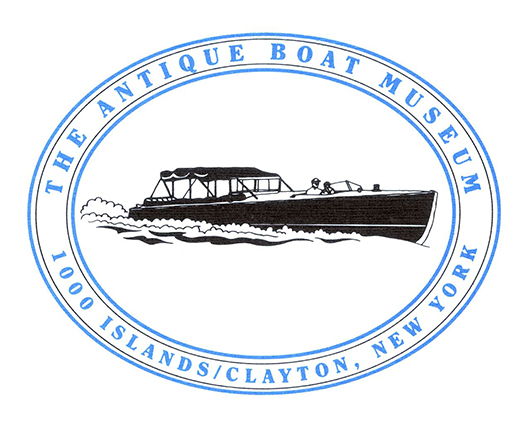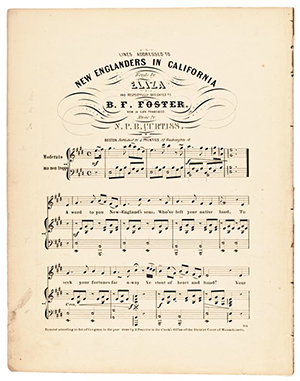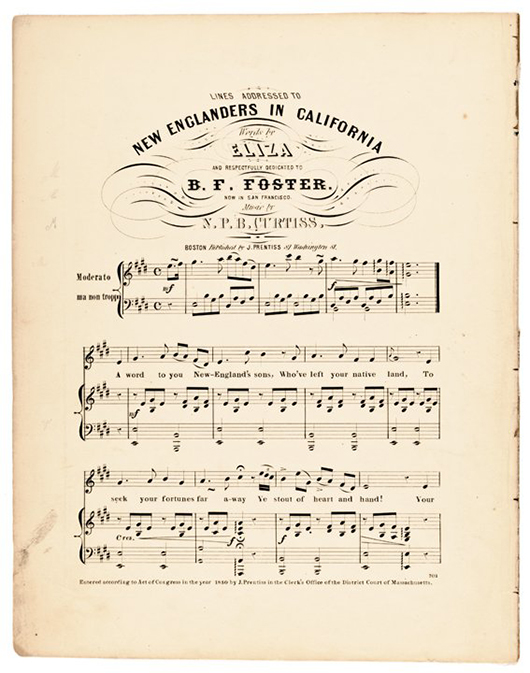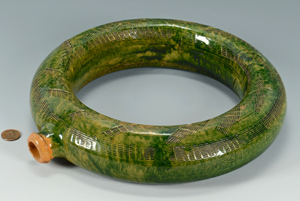
This rare Tennessee ring jug is the most elaborately decorated Southern example of the form found to date, and was made by Civil War era potter Christopher Haun. It sold for $30,680 and will soon go on display at the Museum of Early Southern Decorative Arts. Case Antiques Auction image. KNOXVILLE, Tenn. – A rare piece of Southern pottery and an exceptionally large diamond were the star lots at the Summer Case Antiques Auction, held July 19 at the company’s gallery in Knoxville. The sale attracted more than 3,200 registered bidders from over 60 countries, bidding in person, by Internet, by phone and by absentee (left) bids – a record for participation in a Case summer auction. It was also the company’s highest-grossing Summer sale to date.
LiveAuctioneers.com provide Internet live bidding.
The auction’s prize pottery piece is headed to the Museum of Early Southern Decorative Arts (MESDA) in Winston-Salem, N.C.: a 19th century copper oxide and lead-glazed earthenware bottle made in the shape of a ring, which sold for $30,680 (all prices include the buyer’s premium). Although a utilitarian form, company president John Case said it was the most elaborately decorated Southern ring bottle discovered to date, and the only such known form by Tennessee potter Christopher Haun. Haun is remembered not only as an excellent potter, but also for his role in Civil War history: He was part of a group of Union sympathizers executed for burning the Confederate-controlled Lick Creek Bridge in Greene County, Tenn., in 1861.
The bottle was purchased on behalf of MESDA’s new William C. and Susan S. Mariner Southern Ceramics Gallery and will go on exhibit there in October 2015. A 6-gallon William Grindstaff stoneware jar with double handles and glaze drips hammered for $4,248 (est. $1,200-1,400), setting a new auction record for that East Tennessee potter, and a 6 1/2-inch tall Mid-Atlantic cobalt stenciled stoneware preserving jar with elaborate vase of flowers decoration and script “Ham Easters Clay” competed to $2,596. A rare stamped Maryville Pottery stoneware/redware transitional jug delivered $1,770, and a Blount County, Tenn., stoneware jug by D.L. Smith reached $1,534.
The auction’s highest grossing lot overall was a 5.06-carat diamond ring flanked by channel-set diamonds totaling an additional carat, all set in an 18K yellow gold mounting. A GIA report confirming the diamond’s S12 clarity and I color was included and helped propel the ring to $54,450 (est. $30,000-$40,000).
Jewelry was a hot category overall. A 2.45-carat natural sapphire, flanked by two oval brilliant diamonds in platinum prongs on an 18K yellow gold ring shank earned $6,372 (est. $4,000-$5,000), while an Art Deco ring with 1.65 carat diamond encircled by sapphires in an octagonal platinum setting brought $4,598. A Patek Philippe pocketwatch ticked to $2,832.
One of the top-selling paintings was a sleeper: an impressionistic landscape with barns by Alabama painter John Kelly Fitzpatrick (1888-1953). Fitzpatrick’s work is relatively scarce, and multiple phone, Internet and floor bidders chased it to $15,730 – 10 times its low estimate – despite some condition problems. A marine seascape by Albert Pinkham Ryder (American, 1847-1917) sold for $18,150, while a New England village landscape with windmill by Charles Wysocki (American, 1929-2002) blew past its $3,000-5,000 estimate to $13,570, and a Southern genre landscape depicting an African American family and their cabin by William Aiken Walker (South Carolina, 1838-1921) earned $12,390. A drawing of an African American couple in a wagon by Alfred Hutty (South Carolina, 1877-1954) brought $3,776, and a watercolor autumn landscape by Lloyd Branson (Tennessee, 1861-1925) sold for $2,832. A posthumous oil portrait by Cornelius Hankins (Tennessee, 1863-1946) depicting Robert E. Lee, believed to have been commissioned by the daughter of a soldier who fought with Lee, rallied to $3,872. An oil on canvas of a child with her doll by Edmund Adler Rode (Austria, 1876-1965), charmed its way to $6,136, while a mid- 20th century Paris street scene signed Antoine Blanchard brought $3,146.
It was a banner day for Nashville surrealist painter Werner Wildner (1925-2004). Wildner’s painting of a patched-up Humpty Dumpty sitting atop a wall cracked the artist’s previous world auction record by reaching $5,664, but a second Wildner painting in the sale – a trompe l’oeil style “Punch and Judy” scene – outmatched it when it hit $12,390. Both were from a collection of 20th century art consigned by Nashvillians Stephen and Lisa Steiner Small. The Smalls’ collection also included a painting of a circus train by Kentucky memory painter Helen LaFrance (b. 1919) which steamed to $3,509 (est. $800-1000), and a surrealist oil on canvas by self-taught artist Paul Lancaster (Tennessee, b. 1930), titled Eve in the Garden, which elicited $2,242. A colorful abstract mixed media painting by Henry Faulkner (Kentucky, 1924-1981) brought $2,420. A mixed media serigraph, Back-Out, by Robert Rauschenberg (American, 1925-2008), signed and numbered 38/100, realized $2,124, while an Andy Warhol (1928-1987) screenprint depicting Kimiko Powers brought $1,815, and a Joan Miro (Spanish, 1893-1983) signed lithograph, Maravillas con variaciones acrosticas en el jardin de Miro, 1975, yielded $1,815.
The sale featured several sculptures. Top seller was a bronze by Harriet Frishmuth (American, 1880-1980) at $8,496. A sculpture of a partially nude woman, Odaliske, by Eugene Barillot (French, 1841-1900) sold for $6,292, while a patinated bronze depiction of a woman and girl at a well, after Emile Joseph Nestor Carlier (French, 1849-1927), drew $5,808. A Salvador Dali gold sculpture, St. John of the Cross, edition G-7/500, 1981, registered in the Dali archives, doubled its low estimate at $3,304.
Folk art highlights included a carved and painted cigar store “Indian Princess” with feathered headdress, which soared to $12,980 (est. $3,500-$4,500), and two carved and painted African American ventriloquist dolls, which descended in the family of a Tennessee minstrel show performer. The female brought $2,242 and the male, $1,888. A brightly colored East Tennessee Princess Feather pattern quilt wrapped up $1,180 and a tree of life textile collage by Kate Clayton “Granny” Donaldson of North Carolina (1864-1960) flourished at $1,062. A rare mid-19th century Middle Tennessee house sampler stitched up $5,664.
Civil War-era firearms were in demand, led by a brass frame .36 caliber six-shot revolver, likely made by Samuel Griswold of Georgia, which hit $17,770. A Smith and Wesson .32 caliber No. 2 Army Revolver with holster, formerly belonging to a member of the Hancock Guards (which occupied Nashville during the Civil War) reached $3,304, and a Sharps Model 1859 Carbine, circa 1859-1866, brought $1,888.
An 1844 map of the world by T. & E.H. Ensign with early depiction of the Republic of Texas reached $2,360. An 1827 land grant signed by Tennessee governor Sam Houston two days before he actually took office, doubled expectations at $3,776.
For the first time in company history, the top-selling piece of furniture in the auction was crafted during the 20th century: a George Nakashima cherry “Frenchman’s Cove” #2 Dining Table, circa 1968, which sold for $14,750. There were three bronze and pewter tables by Phillip and Kelvin Laverne, all of which sold within or above estimates: a “Lo-Ta” cube table, $5,428; a coffee table decorated with Roman figures, $5,566; and a circular “Chan” coffee table, $3,872.
The Nakashima table narrowly beat out a beloved 19th century Southern furniture form: a cherry sugar chest from the Middle Tennessee plantation known as Mooreland, which brought a strong $11,800.
“It’s been awhile since we saw a sugar chest crack the $10,000 mark,” noted company president John Case. “The market for brown furniture isn’t entirely dead – it’s just highly selective.”
A circa 1830 cherry china press with glazed doors and East Tennessee provenance brought near the top of its estimate, $9,676, and a Greene County, Tennessee Chippendale chest of drawers with ogee bracket feet doubled its high estimate at $2,242.
There was avid competition for a Federal tea service by Alexandria, Va., silversmith Charles Alexander Burnett (1769-1849), formerly owned by noted East Tennessee collector Richard Doughty. It sold to a private collector for $11,800. Other tea related items in the sale included a six-piece mid-20th century Mexican sterling tea service, $4,427; a Wood and Hughes Aesthetic Movement five-piece silver tea service, $2,541, and an unmarked American Federal period coin silver teapot, $1,062.
Tennessee’s Milligan College selected Case to sell several deaccessioned Chinese items, including a Qing official’s winter wool and silk skull hat with various accessories, $4,114 (est. $500-700), a Qing civil official’s blue silk surcoat with dragon badge and leggings, $3,872 ($700-1,000), and a Qing silk robe with undergarments, $2,541 ($600-900). A Chinese Export hardwood settee adorned with carved rats, monkeys, cranes and other birds led the Asian category overall at $21,780. A turquoise glazed 6-inch diameter bowl with incised dragons commanded $4,356 (est. $300-400).
The sale featured a sizeable collection of European porcelain, led by a KPM-style porcelain plaque of a partially nude woman embracing a lion, which doubled its estimate to earn $7,502. A pair of large bronze-mounted French cobalt porcelain urns rallied to $6,050 (est. $1,400-1600), while another pair of bronze mounted urns with white porcelain and courting scenes realized $4,356. A scarce Rene Lalique blue Canarina perfume bottle with original box competed to $2,596.
A large consignment of model trains was led by a mechanical scale model of the wood-burning DeWitt Clinton steam engine locomotive and three passenger coaches (the Dewitt Clinton was the first American passenger train). It steamed to just over its high estimate, $1,815.
Other highlights included an oak Reginaphone “Lion’s Head” Model 240 music box and phonograph without tone arm or turntable, $10,148 and a small Continental silver-cased bird automaton music box, $3,068. A framed Chattanooga Brewing Company advertising poster circa 1901 depicting the profile of a young beauty bubbled well past its $800-1000 estimate to earn $4,114.
Case is currently preparing for its September online Asian Arts Auction featuring the contents of the Dragon Dreams Museum, a privately owned Chattanooga museum devoted to dragon-themed decorative arts, whose founder died earlier this year. The company is accepting consignments for its next live Fine and Decorative Arts auction, set for Jan. 24.
For more information, call the gallery in Knoxville at 865-558-3033 or the company’s Nashville office at 615-812-6096 or email info@caseantiques.com.
Click here to view the fully illustrated catalog for this sale, complete with prices realized.
ADDITIONAL LOTS OF NOTE
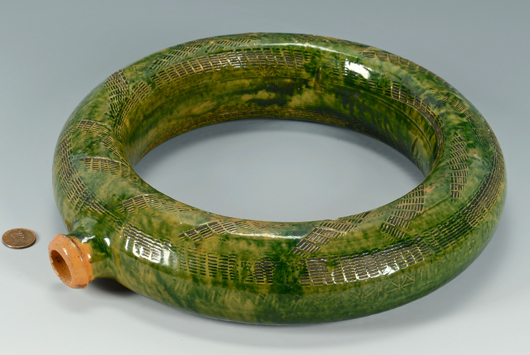
This rare Tennessee ring jug is the most elaborately decorated Southern example of the form found to date, and was made by Civil War era potter Christopher Haun. It sold for $30,680 and will soon go on display at the Museum of Early Southern Decorative Arts. Case Antiques Auction image. 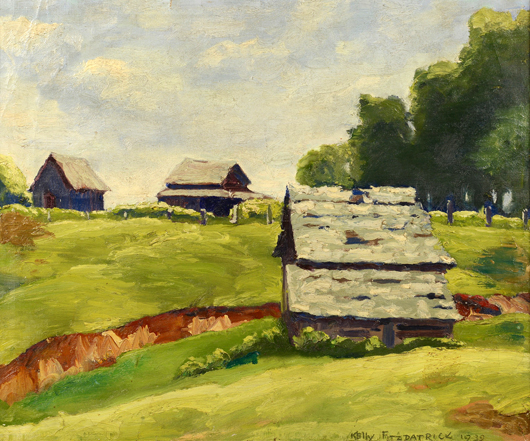
A farm landscape by Alabama painter John Kelly Fitzpatrick yielded a strong $15,730. Case Antiques Auction image. 
A George Nakashima ‘Frenchman’s Cove #2’ cherry dining table was the day’s top-selling furniture piece at $14,750. Case Antiques Auction image. 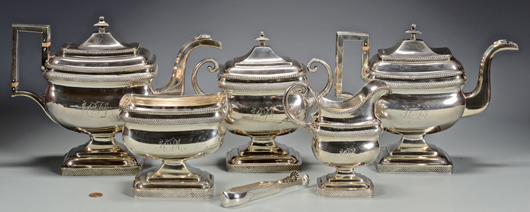
A six-piece Federal coin silver tea service by Charles Burnett of the Washington, D.C., area served up $11,800. Case Antiques Auction image. 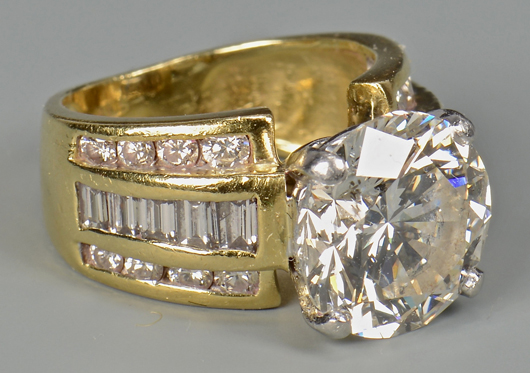
Jewelry had a strong showing, led by this 5.06 carat diamond and 18K gold ring at $54,450. Case Antiques Auction image. 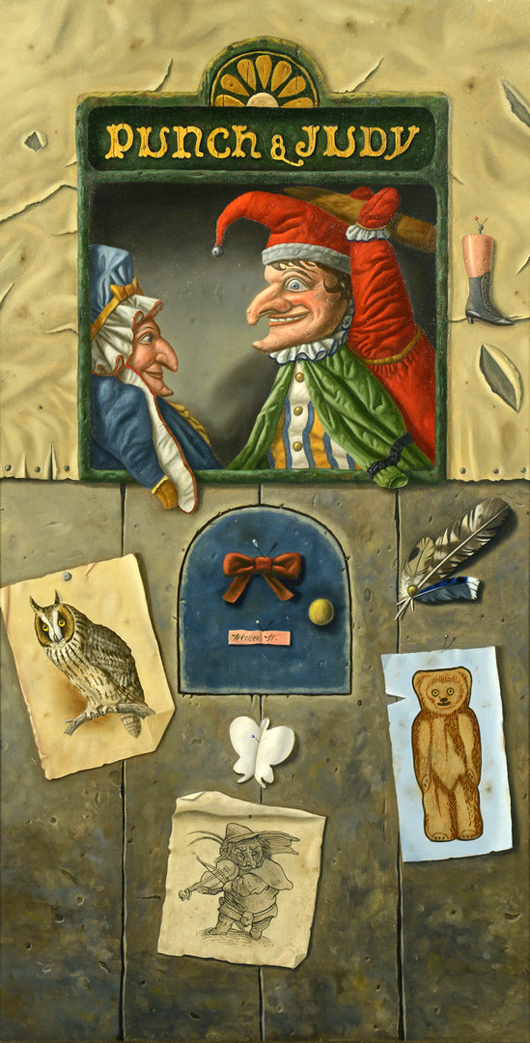
Punch and Judy set a new auction record for Tennessee artist Werner Wildner, hitting $12,390. Case Antiques Auction image.


